Badger
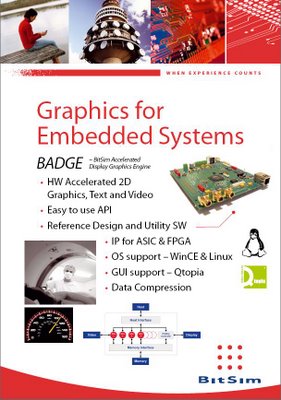
We're showing Badger at the Elektronik-EP fair for three days. You can find our booth here, and print a free ticket here.
And, by the way, congratulations to Nokia and Trolltech!

Anyone in western Sweden looking for a nice car. Look no further than this lovely vehicle! I can throw in a copy of Foundations of Qt Development to sweeten the deal :-)
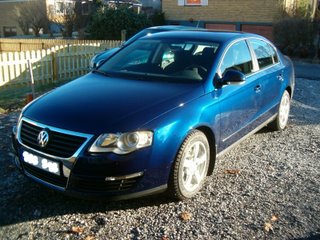
The Qtopia+BADGE study has really reached its end. It has been really fun working with low-level Qtopia development for a few weeks. I’ve not done all this alone, both Bitsim Stockholm and Gothenburg have been involved. Lot’s of colleagues have been forced to put up with my Qtopia ramblings (yes, I’m obsessed) and I’ve had the opportunity to have a look at some really interesting parts of Qtopia.
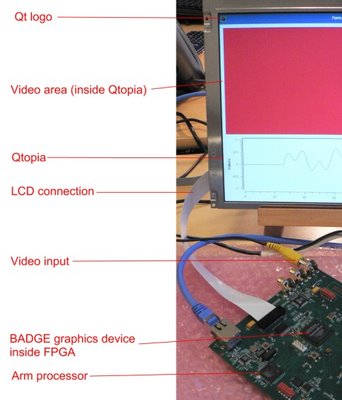
Today is ugly-hack day. BADGE has a nice feature that has no real counter-part in the Qtopia API. This means that I have to dynamically cast the painter engine for a given widget and provide some additional methods in the BADGE version.
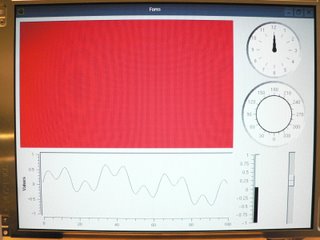
Since BADGE supports quite a few of Qtopia’s basic shapes, we’ve spent some time implementing everything we can think of. Combining this with the verbose driver, we can also tell exactly what the problem is. There are lots of rocks to turn and quite a lot of easy to reach fruit. However, the purpose of the work (for now) is really to do a feasibility study and to lay down the foundation for future work. I interpret this as show that acceleration is possible and pays off, but don’t fix all the details right now.
Back to the Badge Qtopia screen driver project again. Using the svgalib based screen driver example, we’ve created a custom paint engine that intercepts all painting operations. By adding loads of qDebug statements I can get a (dead slow) driver that creates a log of exactly what takes place – a good basis for understanding what to accelerate and how.
Two years ago the QtCentre site was launched. The goal was to provide the leading forum on the internet, encouraging the exchange of experience and to provide a meeting point to the Qt community. The response to this has been beyond our wildest expectations - all thanks to all our visitors and contributors.
Getting Qtopia up and running on the BADGER board was really just a matter of compilation. However, Qtopia’s built-in framebuffer driver automatically assumed that 16 bits per pixel was a 5/6/5 format. This resulted in some rather funny looking colours as it works with a 4/4/4 setup – but at least the framebuffer works as expected.
Even if BADGER works with 4/4/4 right now, it can easily be reconfigured and synthesized for pretty much any other conceivable pixel formats. However, the standard reference design uses 4/4/4 right now, so I'll work with that.
Spending a few more hours, an unaccelerated driver operating directly on the screen was created. The driver simply provides a screen class initializing the hardware, a dummy surface and a paint device simply returning a paint engine inheriting the QRasterPaintEngine. By implementing the drawBufferSpan and drawColorSpans we get something on the screen.
And, hey, the drawColorSpans is a simple draw-horizontal-line-function so we can accelerate it right away. The drawBufferSpan is also accelerated – we simply plot the data to a buffer in the video memory and then use the blitting capabilites of BADGE to have it handle the alpha blending – neat :-)
Recently I’ve been working with Qtopia for Bitsim. The plan is to support acceleration through Qtopia on Linux when using their graphics controller BADGE. For those of you interested in hardware, BADGE is an IP-block that can be implemented in both FPGAs and ASICs. It offers a basic framebuffer as well as acceleration of basic shapes such as lines, rectangles and text (!). It can also be used for blitting and such. You might know it from an apperance at LinuxDevices.
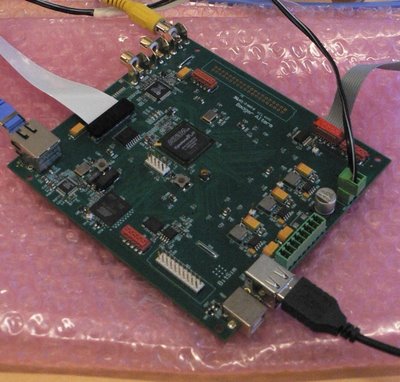
First if all - happy new year to all of you! 2008 will be a great year with lots of exiting Qt and KDE news. The biggest will probably be Qt 4.4 and KDE 4.0 - two milestones.